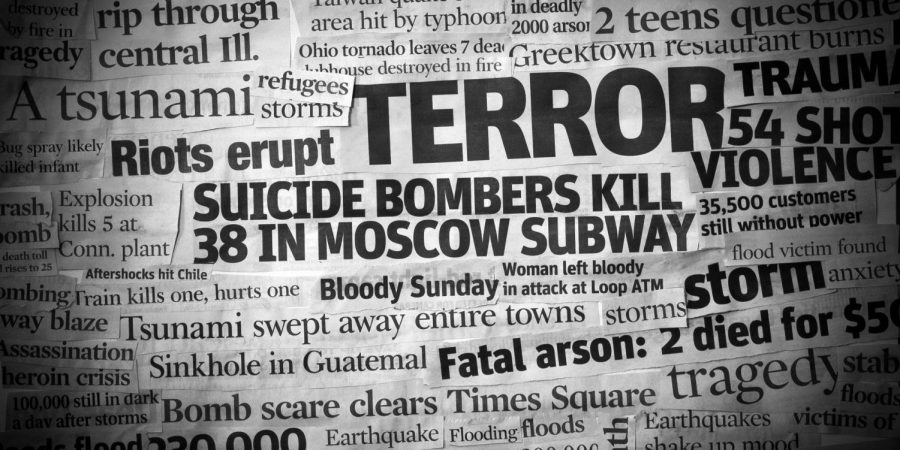No News is Good News-Or Is It?
Photo Credit: Getty Images
Our brains are trained to pay more attention to negative words in headlines.
December 11, 2018
When the headlines of the day flash across our tv and phone screens at the beginning or end of the day, are they usually full of uplifting messages of hope and love? Or are they an in depth look at all the bad that’s happened in the day?
In a world filled with famine, genocide, war, terrorism and much more, news organizations often make our world seem like a bleak and despairing place.
As The Guardian points out, the media is like a sports commentator: they give us only a play-by-play of what’s happening right now, and more often than not, that news is negative. This greatly contributes to our conception that the world is a depressing place.
They state: “Bad things can happen quickly, but good things aren’t built in a day, and as they unfold, they will be out of sync with the news cycle.”
The Guardian essentially points out that while good things do happen, they are usually not as fast-moving or relevant as bad things are. This proves why bad things are more likely to show up in the news.
There’s also an aspect of our brains that prioritizes negative news over positive news.
According to Psychology Today, “your brain is simply built with a greater sensitivity to unpleasant news” and “the brain reacts more strongly to stimuli it deems negative”.
Because we live in Idaho, we know there is so much more to our state than what dominates national news headlines.
However, in the past year, Idaho has made national news exclusively in negative ways. In July the news of a mass stabbing that killed a three year old at her birthday party and injured nine others went national across dozens of news sites. In September The New York Times did an article around hunting photos posted by Idaho’s Fish and Game Commissioner. These photos featured dead endangered animals like giraffes, baboons and jaguars. Then in October, photos of Middleton school teachers dressed in costumes as the border wall and Latinos went viral.
Many Boise High students worry that these news stories are leaving a negative imprint on people’s minds when they think of Idaho.
However, as Lily Kays, a resident of North Carolina points out, “I think big news outlets often write only negative stories from places the general American has deemed as ‘bad’…Once a biased idea is thought in the majority of people who write and decide the news, certain stereotypes are shown as a reality instead of an anomaly.”
For a place like Idaho, which is riddled in a past of white supremacy, it is easy for people to view these events as the makeup of Idaho.
While horrible events like a mass stabbing and the killing of endangered animals did occur and were attached to Idaho, positive state events garnered less attention. Idaho expanded Medicaid coverage in November, ensuring that 62,000 Idahoans will now have access to affordable healthcare.
Idaho may have a past of hate, but that doesn’t mean that it needs to be known for its hate. It’s important that we as Idahoans emanate the good in Idaho, not the bad.
As far as negative news goes, it’s important to realize that while the bad may show up more, there is still good happening in this world. It just takes a little more digging to find it.



